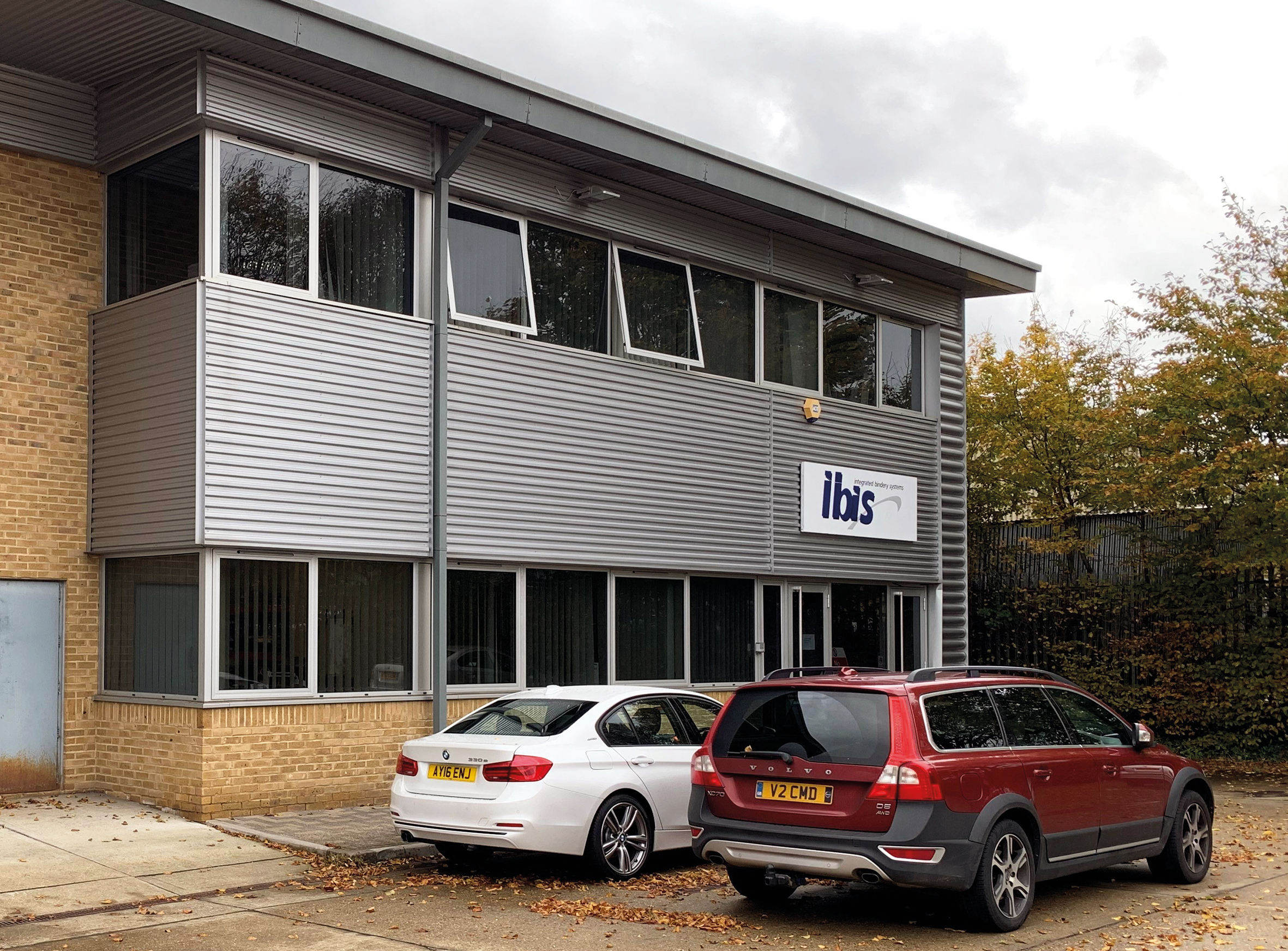The company was IBIS and its Digi-stitcher made high-quality folded and wire-stitched documents at the same speed as the press.
IBIS, standing for Integrated Bindery Systems, had been set up a year earlier by John Cracknell. He was formerly the engineering director of Harris Graphics in Slough, who after 20 years with the company was made redundant along with everyone else when Heidelberg briefly bought and then closed the factory.
Another 20 years on, IBIS is still going strong, with worldwide sales of more than 230 of its original Digi-stitchers and the current Smart-binders introduced in 2004. These high-end machines are available for pretty well any configuration a customer could want, including a clever section glue binding system in the same line. They can match today’s fast continuous-feed inkjets running at up to 180m/minute. Some 93% have been exported, with 40% going to the US, 40% to Europe and the rest spread over a large number of countries worldwide.
That’s pretty impressive for a company that employs just 14 people, plus independent contractors when needed. “Most people outside IBIS imagine that we are larger than this, because we sell to every corner of the world, and we like to maintain this impression,” says Cracknell, who is still managing director. “We are able to keep our numbers to a minimum because we subcontract manufacture to Vacuumatic and we use agents or distributors to sell and support internationally.” Friedheim International is the IBIS agent for the UK.
Vacuumatic assembles Smart-binders at its Colchester site, from IBIS designs for machined parts and electronics controllers and IBIS software. “Vacuumatic assembled the very first IBIS machines and has remained our sub- contract manufacturing partner ever since,” says Cracknell. “MB in Germany supplies the optional sheet pile feeder, the cover feeder and some other optional modules such as buckle folders if needed. We offer a large range of ancillary modules which are purchased from other suppliers around the world.”
He’s reluctant to reveal turnover, but says: “We are profitable – although most of our profits are reinvested into product development for the future – and financially stable, which I think is the most important message.” Despite the Covid-19 upheavals this year, he says “we have actually seen a slight increase in the rate of sales this year compared with last year”.
 IBIS occupies a factory unit in the Cressex business park on the outskirts of High Wycombe. Cracknell says: “I was the original founder, together with an old friend, Malcolm Allitt, who I studied engineering with at Oxford University over 40 years ago and some design engineers from Heidelberg.”
IBIS occupies a factory unit in the Cressex business park on the outskirts of High Wycombe. Cracknell says: “I was the original founder, together with an old friend, Malcolm Allitt, who I studied engineering with at Oxford University over 40 years ago and some design engineers from Heidelberg.”
It’s about 10km from the former Heidelberg-owned Harris Graphics factory in Slough. Harris Graphics was a US-French company that mixed web offset press manufacture with finishing machinery. AM International bought the company in 1986 but sold the web offset side to Heidelberg in 1988, which in turn sold it to Goss in 2004. The finishing side, including Slough, continued under AM and by the late 1990s was called AM/Wohlenberg before Heidelberg bought it then closed it two years later.
“When IBIS was formed in 1999 it was from the ashes of this Slough based company that Heidelberg had closed down in order to take out a competitor,” says Cracknell. “Little did Heidelberg know that the closure, resulting in a few hundred job redundancies including myself as engineering director, would spawn a new company that would see the generation of a new range of digital finishing systems that they were unable to develop themselves.”
The revenge of the engineers didn’t take long, he says. “Only a year after starting to close the Slough factory, Heidelberg managers spotted a new breed of digital saddle stitcher running on the Océ stand at Drupa 2000. This was the first time anyone had seen this type of inline stitching solution and they were surprised to discover that some of the employees they had made redundant the year before were behind it. Engineers, who would have taken many years to bring such an innovative new design to market due to the inevitable bureaucracy and inefficiencies of the massive Heidelberg organisation, had achieved this startling result in less than a year!”
The first customer was the Parliamentary Press in London, running inline with an Océ DemandStream 8090 toner press to produce Government documents overnight.
 Cracknell says that Océ had financially backed the IBIS start-up. “All our digital saddle stitchers built over the first few years were sold exclusively to Océ. However IBIS has remained over the years an independent family business. The main IBIS shareholder and investor partner is a trust company originally set up some generations ago by a distant relative of mine.
Cracknell says that Océ had financially backed the IBIS start-up. “All our digital saddle stitchers built over the first few years were sold exclusively to Océ. However IBIS has remained over the years an independent family business. The main IBIS shareholder and investor partner is a trust company originally set up some generations ago by a distant relative of mine.
“After some years of working with Océ, the contract for exclusivity ended and we started to sell also to other printer vendors and via independent post-press sales agents around the world.”
Over the years the Smart-binders have been continually improved with the latest electronics and software. They are now offered in five standard configurations, SB-1 to SB-5, tailored to customers’ needs and budgets. The SB-1 is intended for slow-speed cutsheet printers while all the others are built to keep up with high-speed continuous printers. SB-2 is for high-speed saddle stitching, while SB-3, SB-4 and SB-5 all combine the option of saddle stitching with ISG gluing (see below). SB-3 is the standard configuration and SB-4 adds an inline section gathering system and single-clamp cover gluing binder. SB-5 includes a perfect binding line with milling unit which runs separately from the saddle-binder/ISG units. IBIS offers single- and five-clamp perfect binders and two types of three-knife trimmer to run inline or offline.
Recent introductions include an additional folder to enable Smart-binder to run at web speeds up to 180m/min. “So far we have not been required to run faster than 150 metres per minute, so the machine speed exceeds the market’s needs,” says Cracknell. “The cycling speed – booklet output rate – has been increased to 7,000 books per hour, or 14,000 in 2-up mode, to allow very thin booklets to be produced at higher web speeds.”
Cracknell says that about 30% of installations run inline with the digital print engine, 40% from a roll unwinder or web cutter and 30% from a sheet pile feeder. “About half of our Smart-binder customers have paid for the unique and patented ISG cold glue binding system and some are only using this system – they do not even have any stitch heads.”
ISG stands for ‘individual sheet gluing’ and puts dots of cold PVA adhesive on the fold line instead of wire stitches, to create glued sections up to 8mm or 10mm thick. ISG heads can run alongside the stitch heads if required. The cost of cold glue can be half that of wire staples on thin books. Other advantages include flat-lying books, constantly variable page counts without adjustments and higher page pull strength. The books are easier to recycle and can be safer around children – there are no staples to spike little fingers or be swallowed.
Cracknell says that ISG gives Smart-binders a unique selling point over the stitchers made by IBIS’ larger Japanese competitor, Horizon.
Customisation options means that probably no two Smart-binder lines are exactly the same. The company has just produced an impressively complex graphical chart, showing all the models and options. “A high proportion of customers require a customised finished solution, so we have organised ourselves to be able to provide this service. We claim to be able to do anything and don’t like to say no to anyone,” Cracknell explains. “It’s what we’re known for – a very flexible solution. We don’t just offer a box off the shelf. The box is just the starting point.
“There are few engineering teams around the world, if any, that can match IBIS’s depth of knowledge in digital finishing for continuous-feed inkjet printers.”
Cracknell’s position as managing director is supported by three other directors, for engineering, finance and customer services. He says that flexibility is the most important attribute he looks for in staff. “In a small team everyone has to be prepared to think outside the box and do a range of different tasks as needed. We also value personal integrity and commitment to our IBIS mission and goals.”
So, what’s next? “We recently launched a new system to produce small-format booklets, eg A5, from a normal 450mm wide web without having to fold each sheet twice,” Cracknell says. “This has the benefit of building the booklet in 4pp increments instead of 8pp, which is essential for some users.” This has led to three recent new SB sales in the US and one in Belgium, he says. Two further US sales came from the introduction of a system running inline with a CMC inserter to produce mail-ready products.
“Other developments are of course in the works but it is too early to talk about these yet. We are at heart an engineering development company, which is why we are so strong at providing customised solutions.”
STAR PRODUCT
The main product and therefore the biggest seller is the IBIS Smart-binder in all its configurations, says Cracknell.











